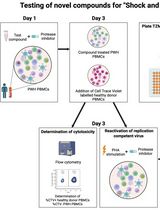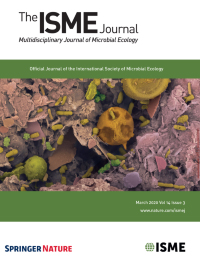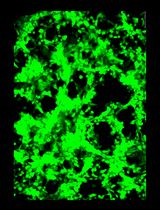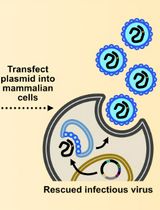- EN - English
- CN - 中文
Giant Mimiviridae CsCl Purification Protocol
拟菌病毒科巨型病毒的CsCl纯化方案
发布: 2020年11月20日第10卷第22期 DOI: 10.21769/BioProtoc.3827 浏览次数: 3642
评审: Alba BlesaModesto Redrejo-RodriguezCristina Suárez

相关实验方案

诱导型HIV-1库削减检测(HIVRRA):用于评估外周血单个核细胞中HIV-1潜伏库清除策略毒性与效力的快速敏感方法
Jade Jansen [...] Neeltje A. Kootstra
2025年07月20日 2393 阅读
Abstract
While different giant viruses’ purification protocols are available, they are not fully described and they use sucrose gradient that does not reach an equilibrium. Here, we report a protocol for the purification of members of the Mimiviridae family virions resulting from Acanthamoeaba castellanii infections. Viruses are harvested after cell lysis and purified through a high density CsCl gradient to optimize the isolation of the virus from the cell debris or other potential contaminants. Due to the large size of the virion capsids, reaching half a micrometer diameter, the quality of the process can be monitored by light microscopy. The resulting purified particles can then be used to perform new infections, DNA extraction, structural studies, sugar composition analyses, sub-compartment characterization or proteomic experiments.
Keywords: Giant viruses (巨型病毒)Background
The discovery of Mimivirus, the first virus visible under a light microscope, overlapping in size and genome complexity with unicellular organisms, initiated a new research area in virology (La Scola et al., 2003 ; Raoult et al., 2004). Over the past 15 years, many additional members of the Mimiviridae family have been isolated from various environments and several protocols have been published to purify the virions (La Scola et al., 2003; Byrne et al., 2009; Arslan et al. ; Philippe et al., 2013 ; Campos et al., 2014 ; Andrade et al., 2017). Different approaches were developed, mostly involving sucrose cushion (Campos et al., 2014 ; Andrade et al., 2017), or sucrose discontinuous gradients (Arslan et al., 2011). However, these protocols are not optimal since the density of the virus is higher than the maximum density of a sucrose solution (1.36 g/cm3 and 1.3 g/cm3, respectively – ICTV 9th report, 2011), meaning the equilibrium cannot be reached. Thus, a long time or high speed centrifugation results in a viral pellet instead of a ring or both depending on the conditions used. We recently reported (Jeudy et al., 2019) an optimized version of our previously published protocol using a CsCl discontinuous gradient (Byrne et al., 2009). Here, we provide the detailed protocol for the purification of Mimiviridae particles.
Materials and Reagents
General use
- Standard pipette filter tips (TipOne filter tips) (StarLab, catalog numbers: S1120-3810 , S1120-1810 , S1120-8810 and S1112-1720 or equivalent)
- Pipettes (10 ml serological pipette) (Sarstedt, catalog number: 86.1254.001 )
- Ultrapure water
Cell culture
- 175 cm2 flasks (Greiner Bio-One, catalog number: 660175 , or equivalent)
- Filtropur S 0.2 (Sarstedt, catalog number: 83.1826.001 )
- Stericup Quick Release Express Plus 0.22 µm PES (Merck Millipore, catalog number: S2GPU11RE )
- Acanthamoeba castellanii (Douglas) Page (ATCC, catalog number: 30010 )
- D-(+)-glucose (Sigma, catalog number: G8270 )
- Sodium citrate tribasic trihydrate (Sigma, catalogue number: C7254 )
- Proteose-Peptone (Sigma, catalog number: 82450 )
- Yeast extract (Fisher BioReagent, catalog number: BP1422 )
- Ampicillin Sodium Salt, Cell Culture/Molecular Biology Grade (Euromedex, catalog number: EU0400 )
- Kanamycin Sulfate, Cell Culture Grade (Euromedex, catalog number: UK0010 )
- D-(+)-Glucose (Sigma, catalog number: G8270 )
- Proteose Peptone Yeast Extract medium (PPYG; see Recipes)
Base medium
Complete medium - 36% Glucose solution (see Recipes)
- Ampicillin stock solution (100 mg/ml) (see Recipes)
- Kanamycin stock solution (25 mg/ml) (see Recipes)
- Plastic Syringes (5 ml syringe) (Terumo, catalog number: SS*05SE1 )
- 21G x 11/2” needle (Terumo, catalog number: AN*2138R1 or equivalent)
- Sterile 50 ml conical tubes (Sarstedt, catalog number: 62.547.254 , or equivalent)
- Polyallomer Tubes, 38.5 ml (Beckman, catalog number: 326823 )
- UltraPure Cesium chloride Optical Grade (Invitrogen, catalog number: 15507-023 )
- Cesium chloride solutions (1.2 g/cm3, 1.3 g/cm3, 1.4 g/cm3 and 1.5 g/cm3; see Recipes)
- K36 buffer (see Recipes)
Purification quality control
- Glass microscope slide (Biosigma, catalog number: VBS653/A )
- Coverslip (Biosigma, catalog number: VBS636 )
- UVette 220-1600 nm (Eppendorf, catalog number: 952010051 )
- Formvar and carbon coated 200 mesh copper/rhodium grids (Electron Microscopy Sciences, catalog number: FCF200-Cu )
- Uranyl acetate 1% in water
Note: Uranyl acetate is a radioactive chemical. It is provided by electron microscopy facilities as we are not allowed to use it in the lab.
Equipment
Microbiological safety hood (ADS laminaire, model: Optimal 12 , or equivalent)
Incubator Bio Performance (Froilabo, catalog number: BP240 , or equivalent)
Centrifuge (Beckman Coulter, model: JXN-30 )
Swinging-Bucket Rotor (Beckman Coulter, model: JS24-38 )
Spectrophotometer (Eppendorf, model: Biophotometer )
Inverted microscope (Zeiss, model: Axio Observer.Z1 )
Transmission Electron Microscope (FEI, model: Tecnai G2 )
Autoclave (SHP Steriltechnik SG, model: Laboklav 135 )
Peristaltic pump (KNF Lab, model: Laboport )
Procedure
文章信息
版权信息
© 2020 The Authors; exclusive licensee Bio-protocol LLC.
如何引用
Bertaux, L., Lartigue, A. and Jeudy, S. (2020). Giant Mimiviridae CsCl Purification Protocol. Bio-protocol 10(22): e3827. DOI: 10.21769/BioProtoc.3827.
分类
微生物学 > 微生物-宿主相互作用 > 病毒
生物化学 > 病毒 > 分离和纯化
您对这篇实验方法有问题吗?
在此处发布您的问题,我们将邀请本文作者来回答。同时,我们会将您的问题发布到Bio-protocol Exchange,以便寻求社区成员的帮助。
Share
Bluesky
X
Copy link











